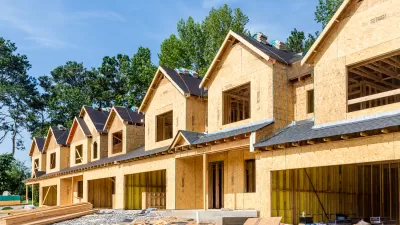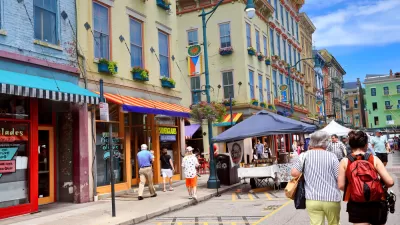A new study examines gentrification (measured by relative income) at the neighborhoods, revealing the unique case of Cincinnati, which increased wealth faster during the recession than it did during the preceding boom.

Randy Simes provides analysis of a report by the Federal Reserve Bank of Cleveland that examines gentrification during the pre-recession boom of 2000-2007 with what happened after by comparing the neighborhoods that either gained or lost wealth in those two periods.
According to the study, "the majority of 59 cities studied now fall between either a 1 percentile decline or 1 percentile increase between 2007 and 2010. This is in contrast to the housing boom period, which saw cities like Atlanta and Washington, D.C. move up 8.7 and 5 percentiles respectively."
"The results of their research found that only a select handful of regions reasonably continued to see relative wealth growth in their principal cities," adds Simes. The report also "detected one region that bucked the trend and actually increased its gains over the housing boom period": Cincinnati, which did not increase it's income ranking during the boom period before the recession, but increased on the same metric at a pace similar to that of Denver of Washington D.C. during the recession.
FULL STORY: Chart of the Day: Here's why Cincinnati's gentrification process is unique

Pennsylvania Mall Conversion Bill Passes House
If passed, the bill would promote the adaptive reuse of defunct commercial buildings.

Planning for Accessibility: Proximity is More Important than Mobility
Accessibility-based planning minimizes the distance that people must travel to reach desired services and activities. Measured this way, increased density can provide more total benefits than increased speeds.

Fair Housing Cannot Take a Back Seat to ‘Build, Baby, Build’
If we overlook fair housing principles in the plan to build US housing back better, we risk ending up right back where we started.

LA Metro Board Approves New 710 Freeway Plan
The newest plan for the 710 corridor claims it will not displace any residents.

Austin’s Proposed EV Charging Rules Regulate Station Locations, Size
City planners say the new rules would ensure an efficient distribution of charging infrastructure across the city and prevent an overconcentration in residential areas.

Making California State Parks More Climate-Resilient
A recently released report offers recommendations for keeping state parks healthy and robust, including acquiring additional land for conservation and recreation.
City of Costa Mesa
Licking County
Barrett Planning Group LLC
HUD's Office of Policy Development and Research
Mpact Transit + Community
HUD's Office of Policy Development and Research
Tufts University, Department of Urban and Environmental Policy & Planning
City of Universal City TX
ULI Northwest Arkansas
Urban Design for Planners 1: Software Tools
This six-course series explores essential urban design concepts using open source software and equips planners with the tools they need to participate fully in the urban design process.
Planning for Universal Design
Learn the tools for implementing Universal Design in planning regulations.

























